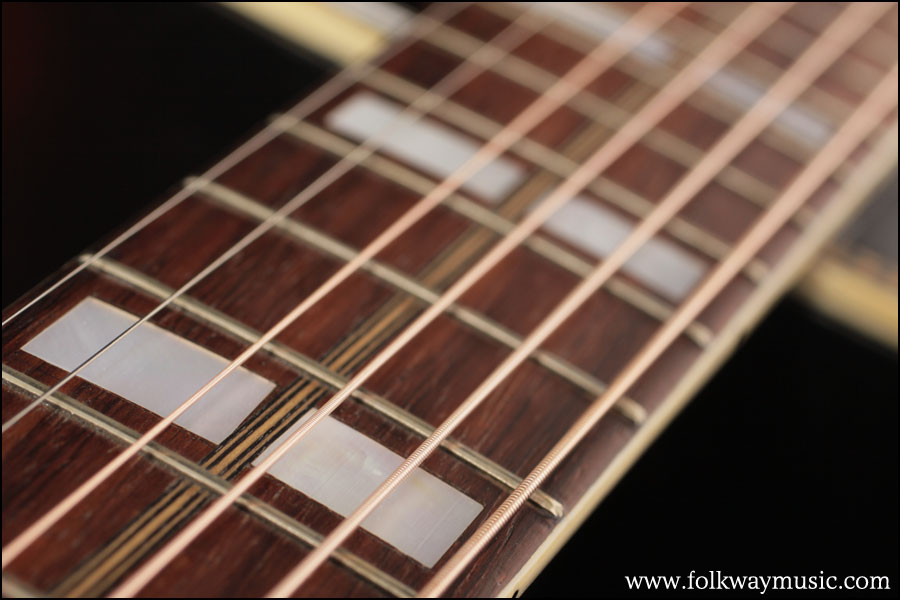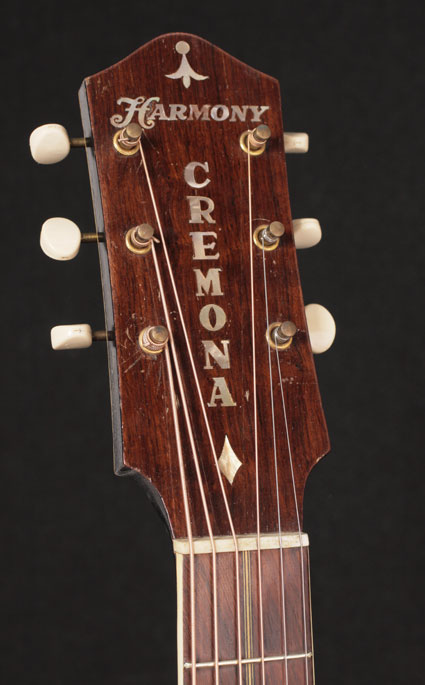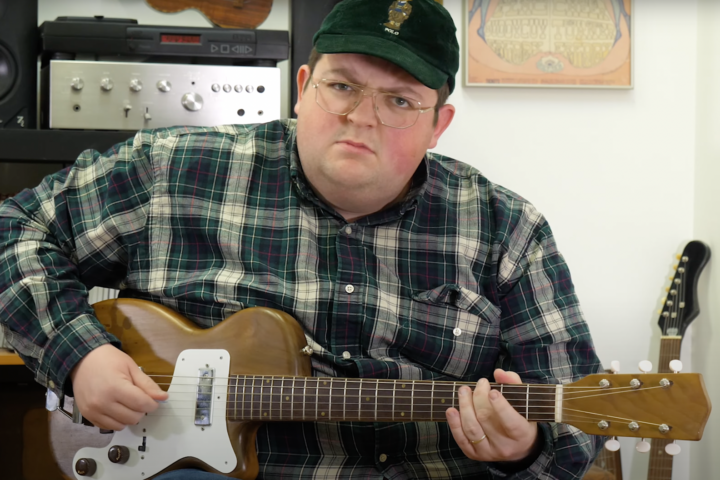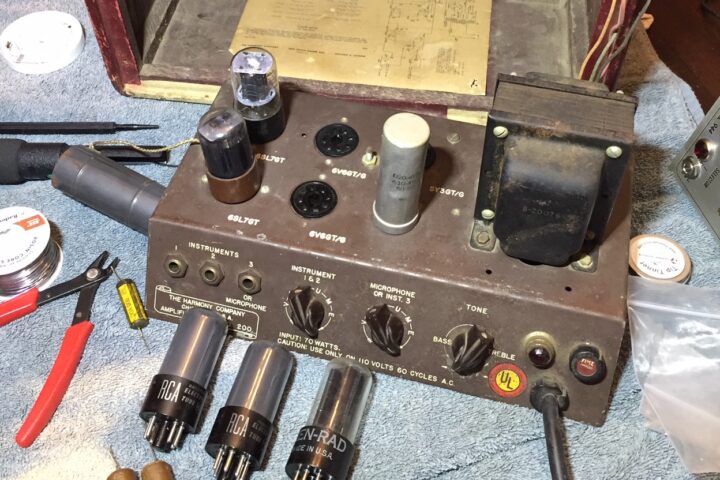Circa 1935 Harmony Cremona VII
At one point in its history Harmony was the largest builder of fretted instruments in America. The company was based in Chicago and was owned by Sears. Consequently Harmony made most of the instruments called Silvertone and Supertone, Sears’ in-house brand names. Much of Harmony’s output was slated for sale through the Sears catalog, which was mailed out to millions of potential customers in the early part of the 20th century. But they also made plenty of guitars under their own name that were sold to music stores across the country. As with the instruments made for the Sears catalog, most of Harmony’s guitars were very inexpensive, with many of them selling for less than fifteen dollars. But they also made a few higher quality guitars such as the mid-1930s Cremona VII seen here. This guitar had a list price of $75 in 1935, $25 dollars more that Gibson’s budget L-50 but quite a bit less than Gibson’s top of the line Super 400, which sold for $400. The Cremona VII had a carved spruce top and solid maple sides and back. It also had herringbone trim, which was more of a flattop style of ornamentation, but I think looks nice here. Most Harmony guitars really don’t sound very good but I’ve played quite a few Cremonas over the years and I think that sound pretty good. They don’t have the punch and power of a Gibson or an Epiphone, but they aren’t chopped liver, either. This particular guitar looks like it was well cared during most of its life. If you’d like to be it’s next caretaker, just send $1999 to the fine people at Folkway Music and they will be happy to set you up.
Click here for the original listing.
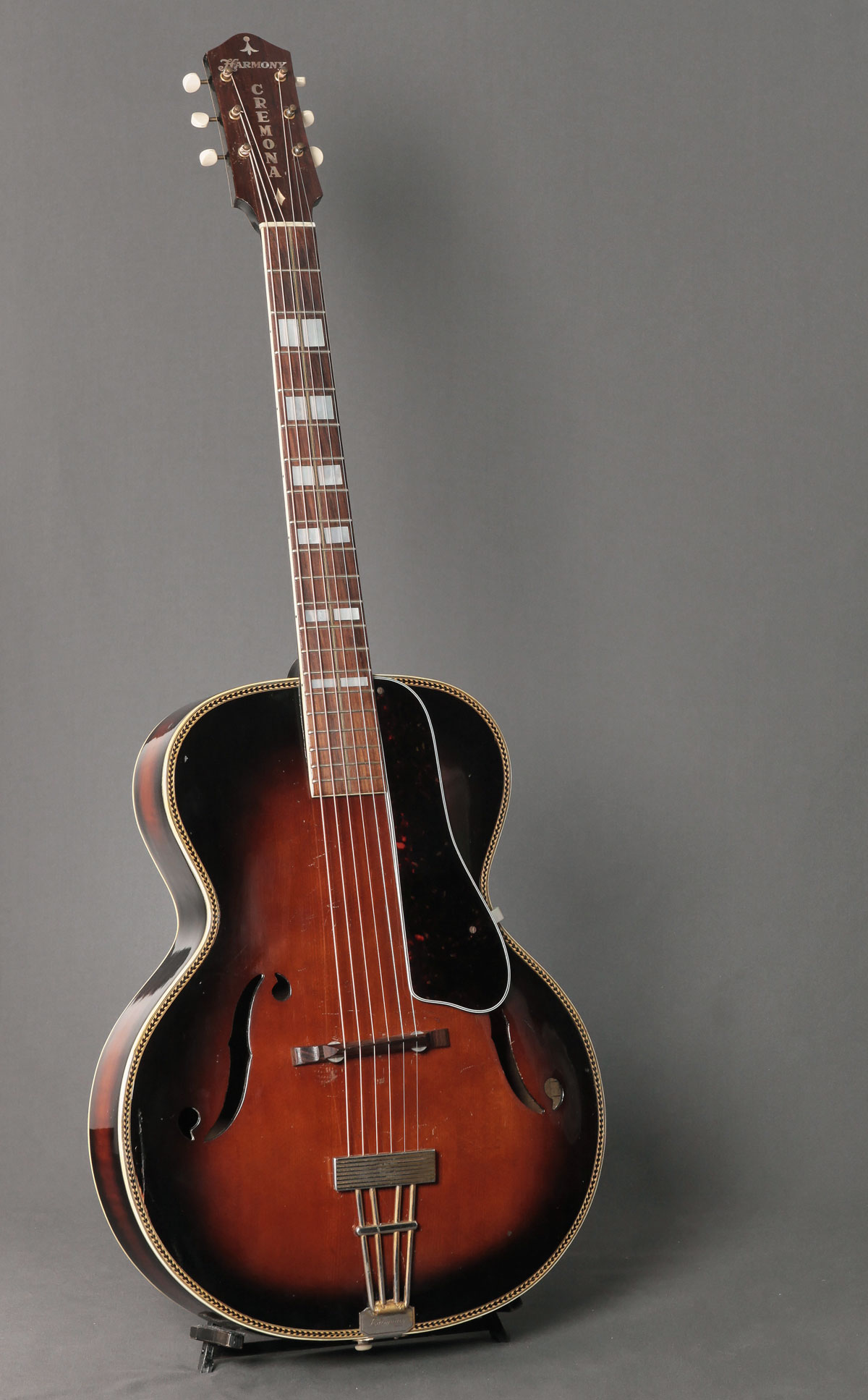
This back has the sort of figure that wouldn’t look out of place on an L-5.
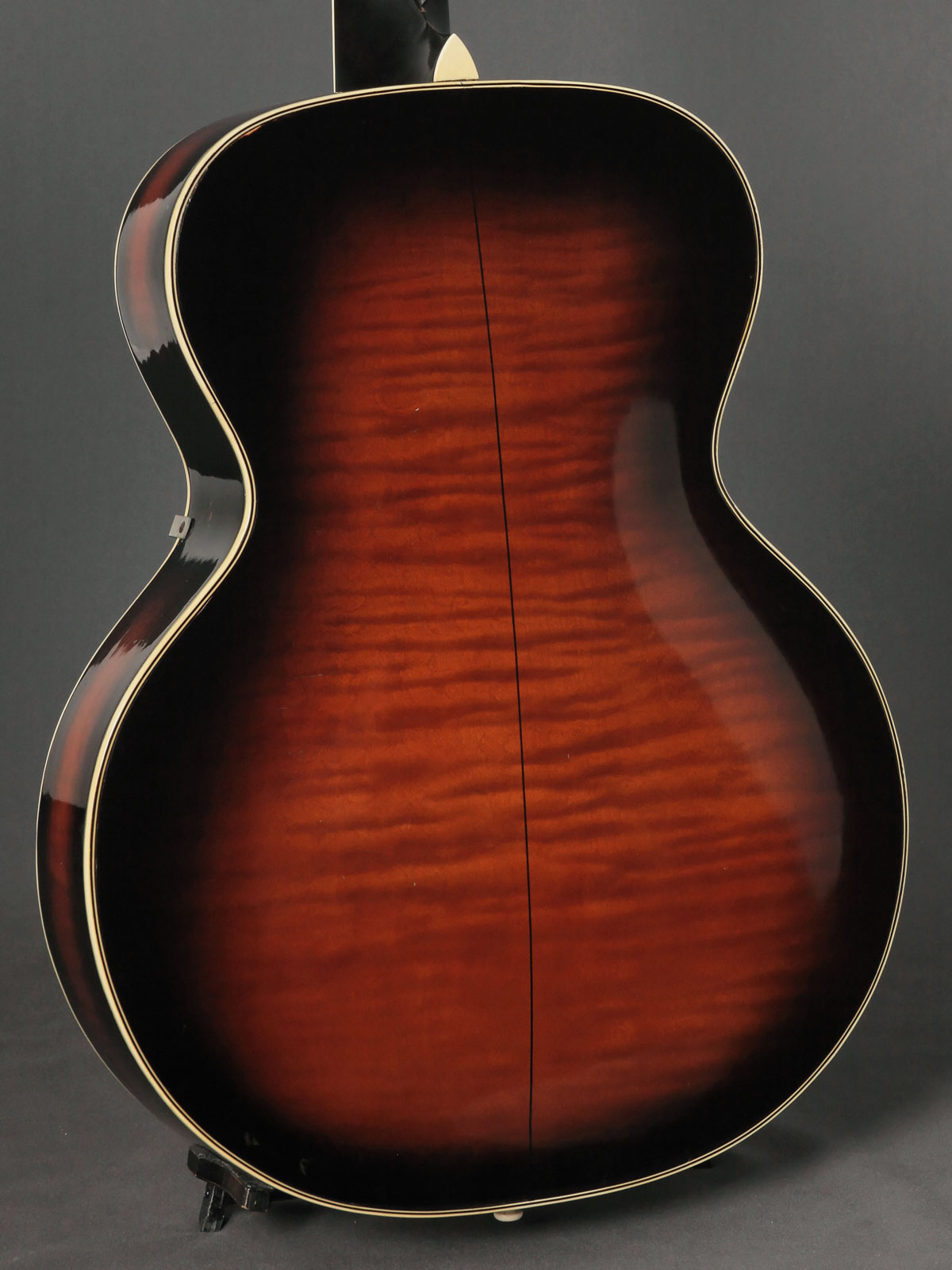
It was fairly common back on the 1930s and 1940s for stores to put their own decals on the guitars they sold. I kind of like them and wish stores today would do it.
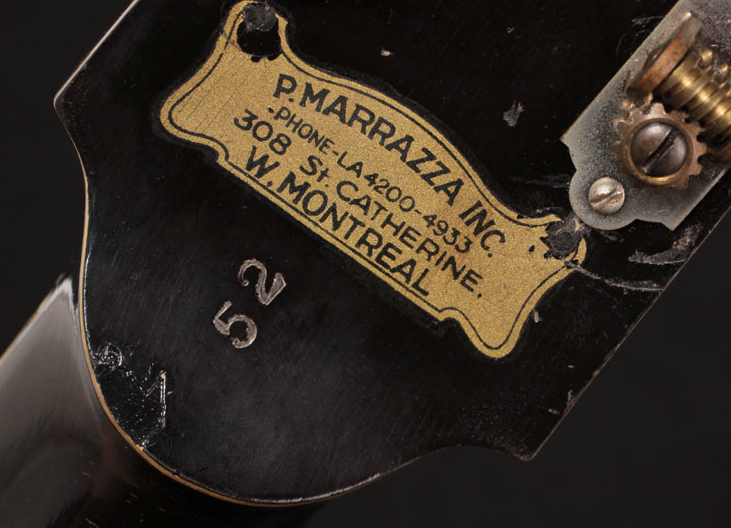
It looks like this tailpiece has been repaired at some point in its history. Martin used these same Grover tailpieces on some of their archtop models.
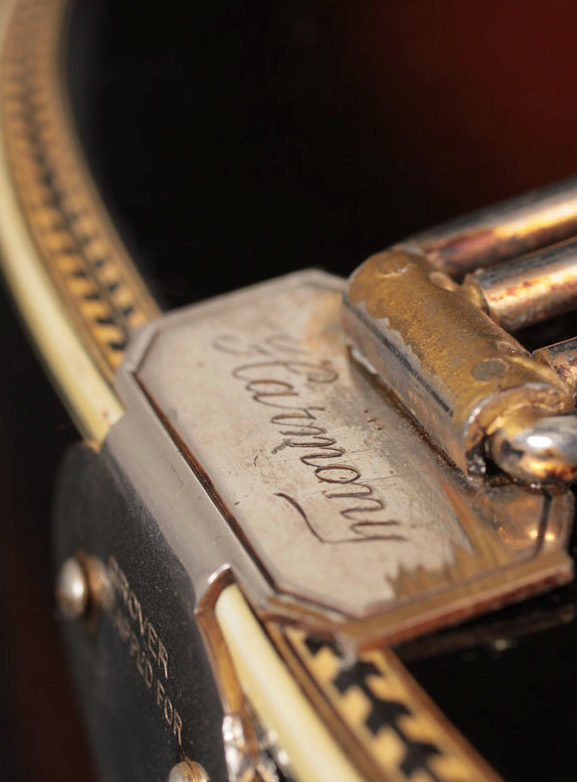
The heringbone purfling looks nice. I wish more archtop builders used it.
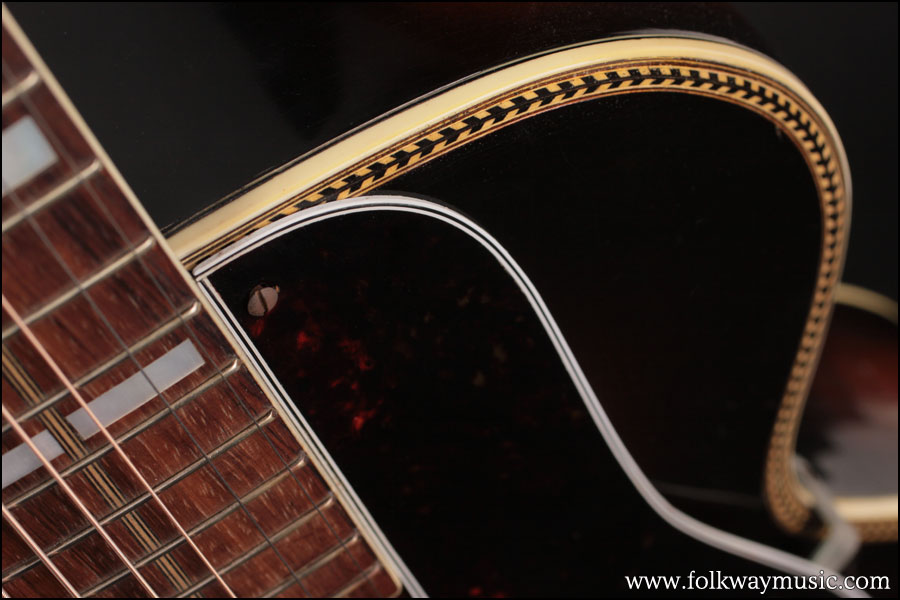
The binding down the center of the fretbaord is an unusual touch.
